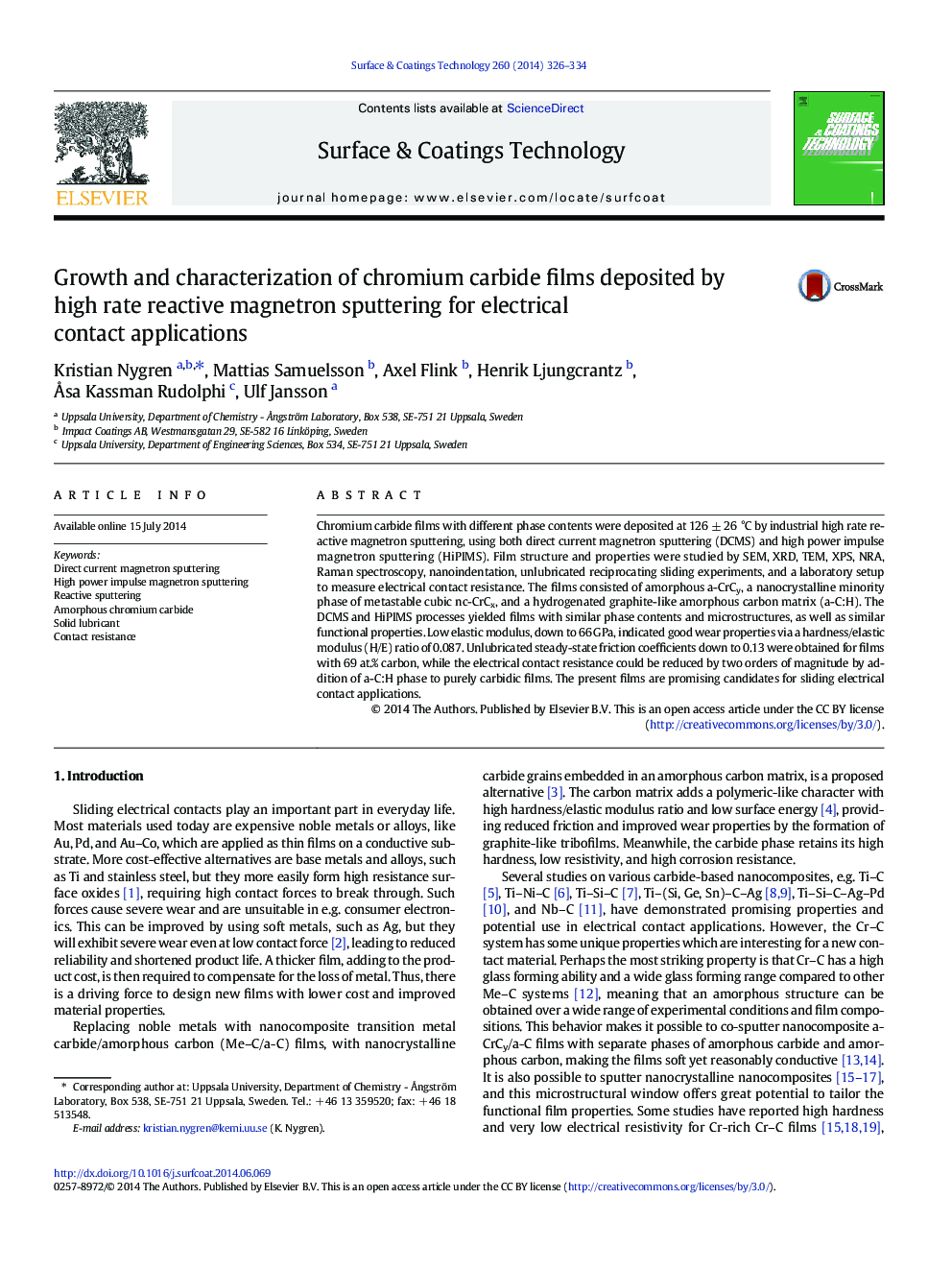| Article ID | Journal | Published Year | Pages | File Type |
|---|---|---|---|---|
| 8027041 | Surface and Coatings Technology | 2014 | 9 Pages |
Abstract
Chromium carbide films with different phase contents were deposited at 126 ± 26 °C by industrial high rate reactive magnetron sputtering, using both direct current magnetron sputtering (DCMS) and high power impulse magnetron sputtering (HiPIMS). Film structure and properties were studied by SEM, XRD, TEM, XPS, NRA, Raman spectroscopy, nanoindentation, unlubricated reciprocating sliding experiments, and a laboratory setup to measure electrical contact resistance. The films consisted of amorphous a-CrCy, a nanocrystalline minority phase of metastable cubic nc-CrCx, and a hydrogenated graphite-like amorphous carbon matrix (a-C:H). The DCMS and HiPIMS processes yielded films with similar phase contents and microstructures, as well as similar functional properties. Low elastic modulus, down to 66 GPa, indicated good wear properties via a hardness/elastic modulus (H/E) ratio of 0.087. Unlubricated steady-state friction coefficients down to 0.13 were obtained for films with 69 at.% carbon, while the electrical contact resistance could be reduced by two orders of magnitude by addition of a-C:H phase to purely carbidic films. The present films are promising candidates for sliding electrical contact applications.
Keywords
Related Topics
Physical Sciences and Engineering
Materials Science
Nanotechnology
Authors
Kristian Nygren, Mattias Samuelsson, Axel Flink, Henrik Ljungcrantz, Ã
sa Kassman Rudolphi, Ulf Jansson,
